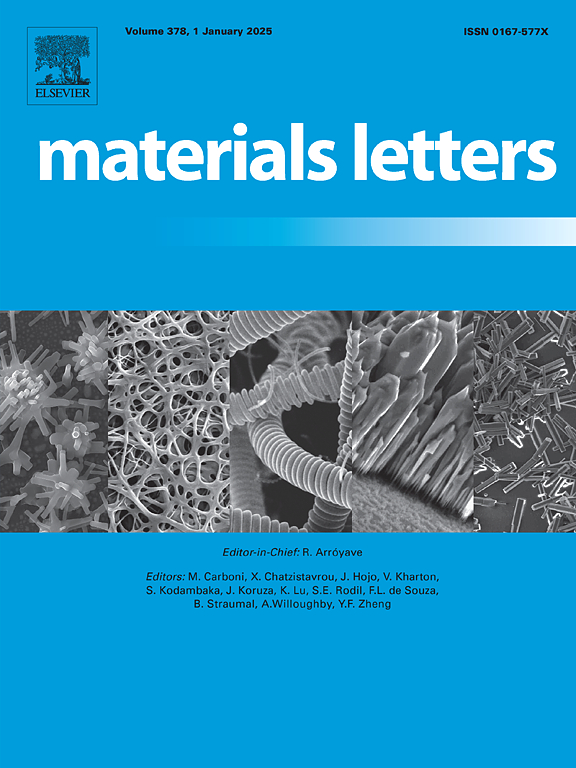Design and fabrication of highly hydrophobic CeO2 films with Ti insertion layer
IF 2.7
4区 材料科学
Q3 MATERIALS SCIENCE, MULTIDISCIPLINARY
引用次数: 0
Abstract
A maximum contact angle value of 120° for hydrophobic surface has been reported on smooth CF3-terminated surfaces, but the poor durability of polymers strongly limits their further applications. Herein, highly hydrophobic CeO2 films were prepared with the insertion of Ti layer using magnetron sputtering, remarkably, the water contact angle reached as high as 123°, achieving the theoretical maximum water contact angle on smooth surface (∼120°). Results showed that CeO2 films were grown on Ti films with good adherence and applied bias voltage influenced the structure and properties of top CeO2 layers. Inhibited growth of high surface energy crystal texture, high content of hydrophobic C-C/C-H component, high Ce3+ content and low lattice oxygen to metal ratio were conducive to obtain highly hydrophobicity on flat CeO2, providing new approaches and scientific guidelines for regulating the wettability of CeO2 films.
求助全文
约1分钟内获得全文
求助全文
来源期刊

Materials Letters
工程技术-材料科学:综合
CiteScore
5.60
自引率
3.30%
发文量
1948
审稿时长
50 days
期刊介绍:
Materials Letters has an open access mirror journal Materials Letters: X, sharing the same aims and scope, editorial team, submission system and rigorous peer review.
Materials Letters is dedicated to publishing novel, cutting edge reports of broad interest to the materials community. The journal provides a forum for materials scientists and engineers, physicists, and chemists to rapidly communicate on the most important topics in the field of materials.
Contributions include, but are not limited to, a variety of topics such as:
• Materials - Metals and alloys, amorphous solids, ceramics, composites, polymers, semiconductors
• Applications - Structural, opto-electronic, magnetic, medical, MEMS, sensors, smart
• Characterization - Analytical, microscopy, scanning probes, nanoscopic, optical, electrical, magnetic, acoustic, spectroscopic, diffraction
• Novel Materials - Micro and nanostructures (nanowires, nanotubes, nanoparticles), nanocomposites, thin films, superlattices, quantum dots.
• Processing - Crystal growth, thin film processing, sol-gel processing, mechanical processing, assembly, nanocrystalline processing.
• Properties - Mechanical, magnetic, optical, electrical, ferroelectric, thermal, interfacial, transport, thermodynamic
• Synthesis - Quenching, solid state, solidification, solution synthesis, vapor deposition, high pressure, explosive
 求助内容:
求助内容: 应助结果提醒方式:
应助结果提醒方式:


